Here are a few quick & simple steps to check if your vacuum breaker/ Anti-siphon valve has suffered some freeze damage: With the water turned on/normal operating position – Look at the unit; no I am not kidding. This is the most obvious step that is overlooked. See if you have any water leaking from anywhere on the device? If so, you may have some old or recent freeze damage, worn or cracked parts, and perhaps dried out gaskets
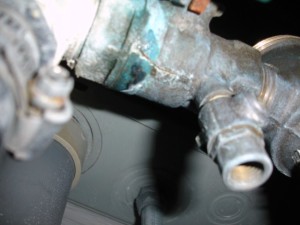
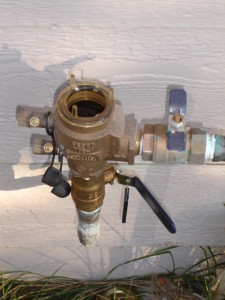
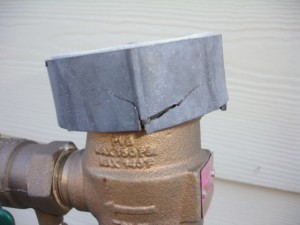
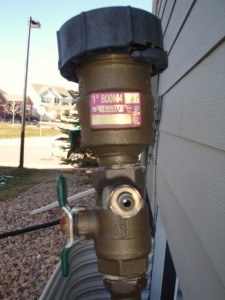

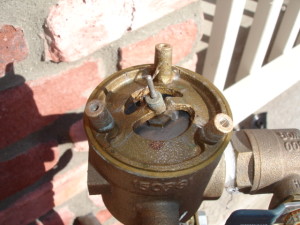
1. Look for obvious cracks or breaks in the copper pipe surrounding your vacuum breaker
2. Inspect the valves and valve handles, the valves areas are some of the weakest points on the system along with the bonnet and poppet. Usually the opposite side of the handles will crack and give way to frozen water in the valve.
3. Inspect the “guts” of the unit (Bonnet/ top piece, think baby’s bonnet if you want to remember the difference) and poppet is the lower piece) on the Febco models you will have plastic pieces that are easily susceptible to cracking and breakage; typically the plastic threaded guts will be pushed up and out of the unit. The best way to check this is to actually be at eye level with the unit.
4. Is there water leaking out if the unit? Under normal conditions there should be no water leaking or squirting out of the unit
5. Green oxidation is also a sign of leaking water out of somewhere in the unit
6. You may need to remove the canopy/ lid to inspect the Bonnet and poppet “the guts” of the unit. It is best to turn one of the large handles on the vacuum breaker to the closed position and shut the water flow off to the unit prior to removal of the canopy. Then open one of the small check ports with a flat head screwdriver to relieve the built up pressure in the unit. Now you can take a good look into the guts of the unit for damage
If you don’t find any of these signs, chances are good that your vacuum breaker made it through the cold weather without any damage.










